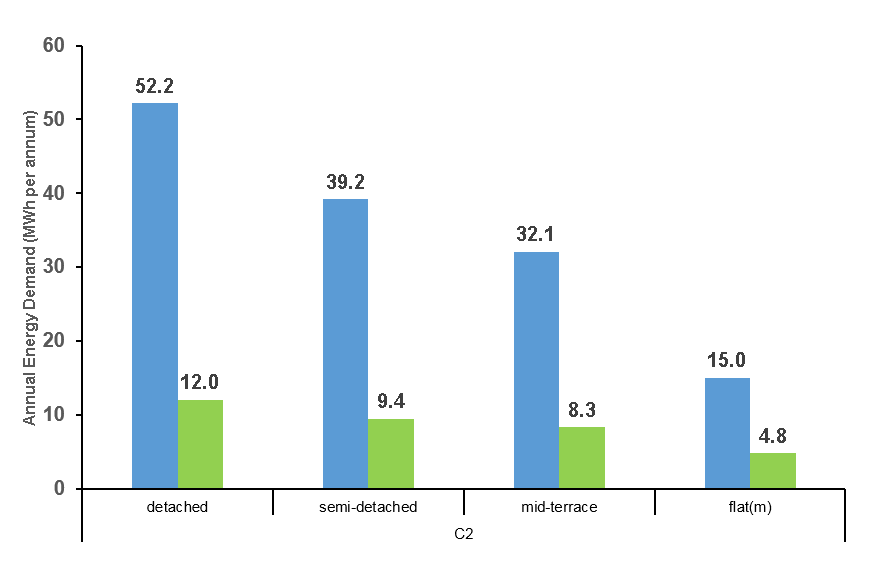Individual Results
|
As described in the modelling section of this website, the process to create the building stock model was to first generate results for individual buildings, then aggregate these results over the whole stock.
These results show the average energy demand per house type. The pre-retrofit values are averaged over every age, fuel and condition of that building type, to give perspective of the results gained here. Specific values for each individual model generated can be found in the modelling database in the modelling section of this website. The first graph shows the total energy demand before retrofit for each house type as well as the energy demand after the government retrofit (B) has been applied. |
|
The second graph shows the results of applying the second silver retrofit standard (C2). This retrofit includes moderate insulation, high efficiency MVHR unit, moderate air tightness and an air source heat pump (ASHP). This displays the difference in impacts between the Government retrofit (B) and a silver retrofit (C2).
From these results, there is a clear trend where the energy demand decreases with each of the building types shown, i.e. an average detached building has an energy demand of 52.2 MWh/yr from our modelling, while a flat has a demand of 15 MWh/yr. This is down to two factors. First, detached buildings are on average the largest building type, while a flat is the smallest. |
|
The second factor is due to external heat loss area. Since the majority of energy demand in these buildings is from heating demand, this has a larger effect. Different types of buildings will have different sections of the external building elements exposed to outside temperatures. The external heat loss area for the building types is as follows:
|

